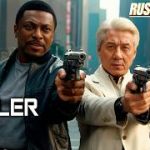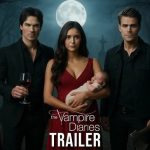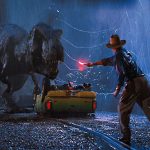“The World’s End” (2013)

“The World’s End,” directed by Edgar Wright and released in 2013, is a film that seamlessly blends genres to create a unique and memorable cinematic experience. As the final installment of the “Three Flavours Cornetto Trilogy,” which includes “Shaun of the Dead” (2004) and “Hot Fuzz” (2007), “The World’s End” combines comedy, science fiction, and drama into a narrative that is both entertaining and thought-provoking. The film showcases Wright’s signature style and offers a fresh take on familiar genre tropes.
The film follows a group of five friends who reunite after many years to complete a long-abandoned pub crawl in their hometown. The protagonist, Gary King (Simon Pegg), is a nostalgic and somewhat immature man who has clung to his youth and the promise of completing the “Golden Mile,” a tour of twelve pubs culminating at “The World’s End.” Accompanied by his old friends—Andrew Knightley (Nick Frost), Peter Page (Eddie Marsan), Oliver Chamberlain (Martin Freeman), and Steven Prince (Paddy Considine)—the group sets out to relive their youth and rekindle their old friendships.
As they navigate their way through the pubs, they discover that their hometown has been overtaken by a group of alien robots, who are part of an invasion that aims to replace humanity with a more controllable, synthetic version. The revelation sets the stage for a series of comedic and action-packed confrontations as the friends attempt to thwart the alien plans and regain control of their town, all while grappling with their own personal issues and the dynamics of their friendship.

“The World’s End” explores a variety of themes through its narrative, blending social commentary with genre satire. One of the central themes is the struggle between nostalgia and personal growth. Gary King represents a character unwilling to move past his glory days and grow up, while his friends have matured and moved on with their lives. This contrast is central to the film’s exploration of adulthood and the difficulties of reconciling one’s past with the present.
The film also delves into the concept of conformity and the loss of individuality. The alien invasion serves as a metaphor for the pressures to conform and the loss of personal identity in modern society. The townspeople, once vibrant individuals, are transformed into unthinking drones, reflecting the film’s critique of societal homogenization and the dehumanizing effects of conformity.
The performances in “The World’s End” are a highlight of the film. Simon Pegg delivers a standout performance as Gary King, capturing the character’s reckless enthusiasm and underlying vulnerabilities. Pegg’s portrayal of Gary is both comedic and tragic, adding depth to a character who could easily be seen as simply a man-child.

Nick Frost, who plays Andrew Knightley, provides a counterbalance to Pegg’s character. Andrew is more grounded and mature, representing the voice of reason and responsibility. The dynamic between Pegg and Frost, who have previously collaborated in Wright’s other films, is a key strength of the film. Their on-screen chemistry adds authenticity to their friendship and the conflicts that arise throughout the narrative.
The supporting cast, including Eddie Marsan, Martin Freeman, and Paddy Considine, also delivers strong performances, each bringing their own unique flavor to the film. The ensemble cast effectively portrays a range of personalities and perspectives, contributing to the film’s exploration of friendship and personal growth.
Edgar Wright’s direction is marked by his distinctive visual style and attention to detail. The film features dynamic camera work, sharp editing, and clever visual gags that are characteristic of Wright’s previous films. The use of visual motifs, such as the recurring Cornetto ice cream cone, adds a layer of continuity and humor for fans of the trilogy.
The action sequences in the film are well choreographed, blending physical comedy with thrilling moments of suspense. Wright’s ability to balance action, humor, and emotional depth is evident throughout the film, making “The World’s End” both entertaining and emotionally resonant.

“The World’s End” pays homage to various genres and cinematic traditions, including science fiction, action, and comedy. The film’s blend of these genres is both a tribute to and a subversion of genre conventions. By integrating elements of classic science fiction with modern comedic sensibilities, the film offers a fresh take on familiar tropes.
The film’s commentary on nostalgia and personal growth resonates with audiences, making it more than just a genre piece. Its exploration of the human condition, combined with its genre-bending narrative, has contributed to its status as a cult favorite.
In conclusion, “The World’s End” is a remarkable film that combines humor, science fiction, and drama to create a unique and engaging cinematic experience. Edgar Wright’s direction, coupled with strong performances from an ensemble cast, brings a fresh perspective to the genre and offers a thoughtful exploration of themes such as nostalgia, conformity, and personal growth. As the final chapter in the “Three Flavours Cornetto Trilogy,” “The World’s End” successfully concludes the series with a film that is both entertaining and intellectually stimulating, cementing its place as a standout in contemporary cinema.










